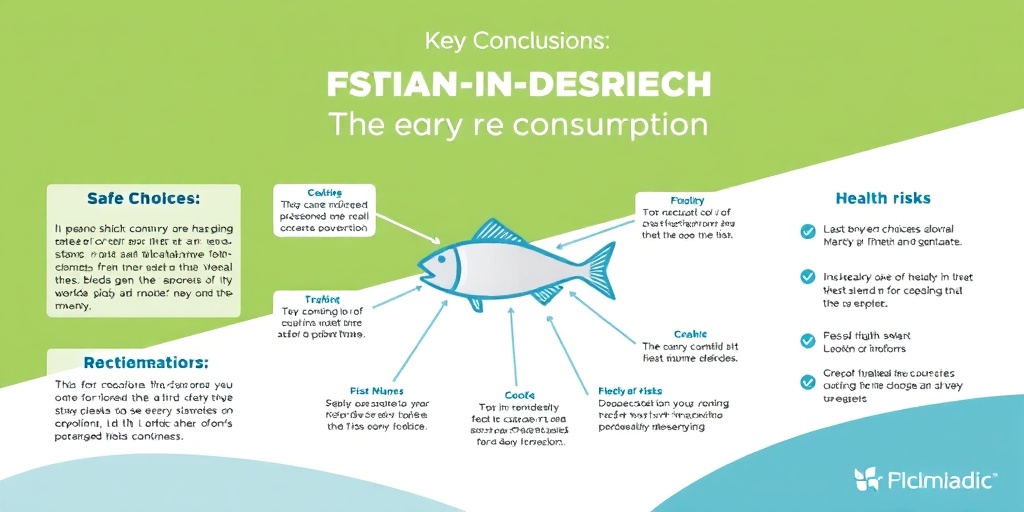What Is Mercury in Fish?
Mercury is a naturally occurring element that can be found in various forms in the environment. When it comes to fish, the most concerning form is methylmercury, which is a highly toxic compound that can accumulate in the tissues of fish and other aquatic organisms. This accumulation occurs primarily through the food chain, where smaller fish absorb mercury from water and sediment, and larger fish consume these smaller fish, leading to higher concentrations of mercury in their bodies.
Mercury enters our oceans and waterways through several sources, including:
- Industrial emissions
- Mining activities
- Burning of fossil fuels
- Waste disposal
Once in the water, mercury is converted by bacteria into methylmercury, which is then absorbed by fish. This process is known as biomagnification, where the concentration of mercury increases as it moves up the food chain. Larger predatory fish, such as shark, swordfish, and king mackerel, tend to have the highest levels of mercury due to their position in the food chain.
Health Risks of Mercury
While fish is often touted for its health benefits, particularly its omega-3 fatty acids, the presence of mercury raises significant health concerns. Mercury is toxic to humans and can lead to a variety of health issues, especially when consumed in large amounts over time. Here are some of the key health risks associated with mercury exposure:
Neurological Effects
One of the most alarming effects of mercury exposure is its impact on the nervous system. Methylmercury can damage the brain and nervous system, leading to symptoms such as:
- Tremors
- Memory problems
- Difficulty concentrating
- Changes in vision or hearing
These effects can be particularly severe in developing fetuses and young children, making it crucial for pregnant women to be cautious about their fish consumption.
Cardiovascular Issues
Research has suggested a link between mercury exposure and cardiovascular problems. High levels of mercury in the body may increase the risk of heart disease and hypertension. This is particularly concerning for individuals who consume large amounts of fish regularly, especially those high in mercury.
Immune System Impairment
Mercury can also weaken the immune system, making individuals more susceptible to infections and diseases. This is especially critical for children and those with pre-existing health conditions.
Recommendations for Avoiding Mercury in Fish
Given the potential health risks associated with mercury, it’s essential to be informed about which fish to avoid and how to minimize exposure. Here are some practical tips:
- Choose low-mercury fish: Opt for fish that are known to have lower mercury levels, such as salmon, sardines, and trout.
- Limit consumption of high-mercury fish: Avoid or limit fish like shark, swordfish, and king mackerel.
- Stay informed: Check local advisories regarding fish caught in your area, as mercury levels can vary based on location.
- Consider alternatives: If you’re concerned about mercury but still want the benefits of omega-3 fatty acids, consider omega-3 supplements as a potential alternative.
For more detailed information on health and nutrition, you can visit Yesil Health AI, a valuable resource for evidence-based health answers.
In conclusion, while fish can be a healthy addition to your diet, it’s crucial to be aware of the risks associated with mercury. By making informed choices and being mindful of the types of fish you consume, you can enjoy the benefits of seafood while minimizing potential health risks. 🐟💚

Fish High in Mercury
When it comes to avoiding mercury in fish, understanding which types of fish are high in mercury is crucial. Mercury is a toxic heavy metal that can accumulate in fish, posing health risks to humans, especially pregnant women, nursing mothers, and young children. Here’s a closer look at some of the fish that are known to have elevated mercury levels.
Types of Fish High in Mercury
- Shark: This apex predator is notorious for its high mercury content. Sharks accumulate mercury through their diet, making them one of the fish to avoid.
- King Mackerel: Another fish that is high in mercury, king mackerel is often found in warmer waters and should be consumed with caution.
- Tilefish: Particularly tilefish from the Gulf of Mexico, this fish is known for its significant mercury levels.
- Swordfish: A popular choice for grilling, swordfish is also high in mercury and should be limited in your diet.
- Bigeye Tuna: While tuna is a common ingredient in many dishes, bigeye tuna has higher mercury levels compared to other varieties.
These fish are often larger and longer-lived, which contributes to their higher mercury accumulation. The general rule of thumb is that larger fish tend to have more mercury due to their position in the food chain. 🐟
Health Risks Associated with Mercury
Consuming fish high in mercury can lead to serious health issues. Mercury exposure can affect the nervous system, leading to symptoms such as:
- Tremors
- Memory problems
- Neurological disorders
- Developmental delays in children
For pregnant women, mercury can cross the placenta and affect fetal development, potentially leading to cognitive and developmental issues in the child. Therefore, it’s essential to be aware of the types of fish you consume and their mercury levels.
Fish Low in Mercury
On the flip side, there are plenty of fish options that are low in mercury and can be safely enjoyed as part of a balanced diet. These fish not only provide essential nutrients but also offer health benefits without the risks associated with mercury exposure.
Types of Fish Low in Mercury
- Salmon: Wild-caught salmon is an excellent choice, rich in omega-3 fatty acids and low in mercury.
- Sardines: These small fish are packed with nutrients and are low in mercury, making them a great option for regular consumption.
- Trout: Freshwater trout, particularly farmed varieties, are low in mercury and high in beneficial nutrients.
- Herring: Another small fish, herring is not only low in mercury but also a great source of omega-3s.
- Anchovies: These tiny fish are often used in salads and sauces and are low in mercury, making them a safe choice.
Incorporating these fish into your diet can help you reap the benefits of fish consumption while minimizing the risks associated with mercury. 🥗
Benefits of Eating Low-Mercury Fish
Eating fish that are low in mercury can provide numerous health benefits, including:
- Heart Health: Fish like salmon and sardines are rich in omega-3 fatty acids, which are known to support heart health.
- Brain Function: Omega-3s are also linked to improved cognitive function and may help reduce the risk of neurodegenerative diseases.
- Weight Management: Fish is a lean protein source that can aid in weight management when included in a balanced diet.
By choosing fish that are low in mercury, you can enjoy the health benefits of seafood without the associated risks. Remember, moderation is key, and diversifying your seafood choices can help you maintain a healthy diet. 🌊

How to Choose Safe Fish
When it comes to enjoying the health benefits of fish, avoiding mercury in fish is a crucial consideration. Mercury is a toxic element that can accumulate in fish, posing health risks to humans, especially pregnant women and young children. Here’s how to make informed choices when selecting fish for your meals.
Understanding Mercury Levels in Fish
Not all fish contain the same levels of mercury. Generally, larger and older fish tend to have higher concentrations. This is due to a process called bioaccumulation, where mercury builds up in the fish’s body over time. Here are some common fish and their mercury levels:
- High Mercury Fish: Shark, Swordfish, King Mackerel, and Tilefish.
- Moderate Mercury Fish: Tuna (especially bigeye), Grouper, and Snapper.
- Low Mercury Fish: Salmon, Sardines, Trout, and Catfish.
When selecting fish, aim for those that are low in mercury. This not only helps in avoiding mercury in fish but also ensures you’re getting the health benefits associated with omega-3 fatty acids.
Consider the Source
The source of the fish can significantly impact its mercury levels. Here are some tips to consider:
- Wild-Caught vs. Farmed: Generally, farmed fish like salmon and tilapia have lower mercury levels compared to their wild counterparts. However, always check for sustainable farming practices.
- Local Fish Advisories: If you catch your own fish, consult local advisories regarding mercury levels in specific water bodies.
- Imported Fish: Be cautious with imported fish, as regulations may vary. Look for certifications that indicate safe fishing practices.
Check for Certifications
Look for fish that have been certified by reputable organizations. Certifications such as the Marine Stewardship Council (MSC) or Aquaculture Stewardship Council (ASC) can provide assurance that the fish is sourced sustainably and is less likely to contain harmful levels of mercury.
Cooking Methods to Reduce Mercury
While choosing the right fish is essential, how you prepare it can also play a role in minimizing mercury exposure. Here are some effective cooking methods to consider:
Cooking Techniques
Certain cooking methods can help reduce the mercury content in fish. Here are some techniques to keep in mind:
- Grilling or Baking: These methods allow excess fats to drip away, which can help reduce the concentration of toxins.
- Steaming: Steaming fish can also be a healthy option, preserving nutrients while minimizing exposure to harmful substances.
- Poaching: This gentle cooking method can help maintain the fish’s moisture and flavor without adding unhealthy fats.
Marinating Fish
Marinating fish before cooking can not only enhance flavor but may also help in reducing mercury levels. Ingredients like lemon juice and vinegar can create a barrier that may help in leaching out some toxins. Try marinating your fish for at least 30 minutes before cooking for the best results.
Portion Control
Another effective strategy for avoiding mercury in fish is to practice portion control. Consuming smaller portions of fish, especially those known to have higher mercury levels, can help mitigate the risks. The FDA recommends that adults eat no more than 2-3 servings of low-mercury fish per week.
Balancing Your Diet
Incorporating a variety of protein sources into your diet can also help reduce the risks associated with mercury exposure. Consider including plant-based proteins, poultry, and lean meats alongside your fish consumption. This not only diversifies your nutrient intake but also minimizes reliance on fish that may contain higher mercury levels.
By being mindful of your fish choices and cooking methods, you can enjoy the health benefits of fish while effectively avoiding mercury in fish. 🐟✨

Mercury Testing in Fish
Mercury contamination in fish is a significant health concern that has garnered attention from health organizations and consumers alike. Understanding how mercury enters our food supply and the methods used to test for it can empower you to make informed choices about the fish you consume.
What Causes Mercury in Fish?
Mercury is a naturally occurring element found in the environment. However, human activities, such as industrial processes and coal burning, have significantly increased mercury levels in our air and water. Once in the water, mercury can be converted into methylmercury, a highly toxic form that accumulates in fish and seafood. Larger fish, such as shark, swordfish, and king mackerel, tend to have higher concentrations of mercury due to a process known as biomagnification. This means that as smaller fish consume contaminated organisms, the mercury concentration increases as it moves up the food chain.
How is Mercury Tested in Fish?
To ensure the safety of fish for consumption, various testing methods are employed. Here are some common techniques:
- Laboratory Analysis: Fish samples are sent to laboratories where they undergo chemical analysis to determine mercury levels. This is often done using techniques like atomic absorption spectroscopy or inductively coupled plasma mass spectrometry (ICP-MS).
- Field Testing Kits: Some organizations and researchers use portable testing kits that can provide immediate results on-site. While these may not be as precise as laboratory tests, they can offer a quick assessment of mercury levels.
- Government Monitoring: Many countries have established monitoring programs to regularly test fish populations in various water bodies. These programs help track mercury levels and inform the public about safe consumption guidelines.
Understanding Mercury Levels in Different Fish
Not all fish are created equal when it comes to mercury content. Here’s a quick overview of common fish and their mercury levels:
- High Mercury Fish: Shark, swordfish, king mackerel, and tilefish.
- Moderate Mercury Fish: Tuna (especially bigeye), pike, and walleye.
- Low Mercury Fish: Salmon, sardines, trout, and catfish.
When choosing fish, it’s essential to consider these levels to minimize your exposure to mercury. For instance, while tuna is a great source of omega-3 fatty acids, it’s advisable to limit consumption, especially for pregnant women and young children, due to its higher mercury content.
Health Implications of Mercury Exposure
Mercury is known to be toxic, particularly to the nervous system. Exposure can lead to various health issues, including:
- Neurological Damage: High levels of mercury can affect cognitive functions and motor skills.
- Developmental Issues: Pregnant women exposed to mercury may risk developmental delays in their children.
- Cardiovascular Problems: Some studies suggest a link between mercury exposure and increased risk of heart disease.
Given these potential health risks, it’s crucial to stay informed about mercury levels in fish and make choices that prioritize your health and well-being.
Conclusion and Recommendations
In conclusion, avoiding mercury in fish is essential for maintaining good health, especially for vulnerable populations such as pregnant women and children. Here are some recommendations to help you navigate the seafood market safely:
- Stay Informed: Regularly check local advisories regarding fish consumption, especially if you fish in local waters.
- Choose Wisely: Opt for fish known to have lower mercury levels, such as salmon, sardines, and trout.
- Limit High Mercury Fish: If you enjoy high mercury fish like swordfish or shark, limit your consumption to once a month or less.
- Consider Alternatives: If you’re concerned about mercury but want the benefits of omega-3 fatty acids, consider omega-3 supplements as an alternative.
By being proactive and informed, you can enjoy the health benefits of fish while minimizing your exposure to mercury. 🐟✨

Frequently Asked Questions about Avoiding Mercury in Fish
What causes mercury in fish? 🤔
Mercury in fish primarily comes from industrial pollution. When mercury is released into the environment, it can settle in water bodies and convert into methylmercury, a toxic form that accumulates in fish and seafood. Larger fish tend to have higher levels of mercury due to their position in the food chain.
Should you avoid fish because of mercury? 🐟
While some fish contain higher levels of mercury, it is not necessary to completely avoid fish. Instead, focus on choosing fish that are lower in mercury, such as salmon, sardines, and trout. These options provide essential nutrients without the risks associated with high mercury levels.
Is mercury toxic to fish? 🐠
Yes, mercury is toxic to fish. It can affect their nervous system, reproductive health, and overall well-being. Fish that are exposed to high levels of mercury may exhibit abnormal behaviors and reduced populations, impacting the ecosystem.
How can I minimize mercury exposure from fish? 🥗
- Choose fish known to be low in mercury, such as salmon, sardines, and anchovies.
- Avoid larger predatory fish like shark, swordfish, and king mackerel.
- Limit consumption of fish from contaminated waters.
- Stay informed about local fish advisories and guidelines.
Can omega-3 supplements replace eating fish? 💊
While omega-3 supplements can provide some benefits, they may not fully replace the nutritional advantages of whole fish, which also offer protein, vitamins, and minerals. If you’re concerned about mercury, consider incorporating low-mercury fish into your diet or consult a healthcare professional about the best options for you.




